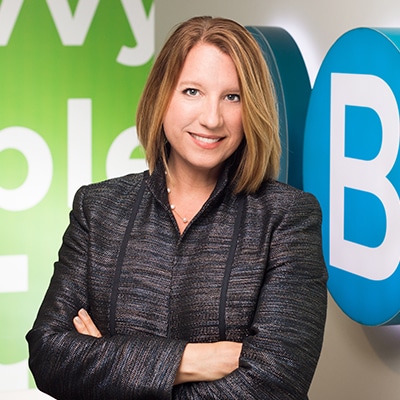Article written by:
Rebekah Smith, CPA, CFF, CVA, MAFF
Director of Forensic & Dispute Advisory Services
Dustin Minton, CPA, MBA
Director, Restaurant Services
Jeremy Bronson
Director, Accounting & Business Advisory Services
One of the most Frequently Asked Questions (“FAQ”) surrounding the Small Business Administration (“SBA”) Paycheck Protection Program (“PPP”) is, “What is the definition of transportation costs?” under non-payroll expenses. The wait is over! On August 4, 2020, the United States Treasury Department released 23 new FAQs, one of which defines transportation expenses.
Before getting too excited, thinking this is finally the clarification of all unanswered questions, much of what was just released (as FAQs) was already addressed in the forgiveness application released on June 16, 2020. See GBQ’s previous articles, “SBA Issues Updated PPP Loan Forgiveness Application and Instructions” and “5 Key Questions Answered for PPP Loan Forgiveness” for additional insight.
There are a few points of clarification worth noting, including the definition of transportation (spoiler alert – it is not fuel!) Points include:
Group Health Care: Of note in this FAQ, the acceleration of health care expenses is not allowed.
Question: What expenses for group health care benefits will be considered payroll costs that are eligible for loan forgiveness?
Answer: Employer expenses for employee group health care benefits that are paid or incurred by the borrower during the Covered Period or the Alternative Payroll Covered Period are payroll costs eligible for loan forgiveness. However, payroll costs do not include expenses for group health care benefits paid by employees (or beneficiaries of the plan) either pre-tax or after-tax, such as the employee share of their health care premium. Forgiveness is not provided for expenses for group health benefits accelerated from periods outside the Covered Period or Alternative Payroll Covered Period.
Retirement Benefits: Similar to group health care, the acceleration of retirement benefits from future periods is not allowed. This does still leave open the question of making a prior period or prior year contribution during the covered period. However, given the ability to extend the covered period up to 24 weeks, most businesses can simply extend their period and capture more payroll in order to spend 100% of its loan proceeds without having to risk a detrimental interpretation regarding prior period retirement plan benefits.
Question: What contributions for retirement benefits will be considered payroll costs that are eligible for loan forgiveness?
Answer: Generally, employer contributions for employee retirement benefits that are paid or incurred by the borrower during the Covered Period or Alternative Payroll Covered Period qualify as “payroll costs” eligible for loan forgiveness. The employer contributions for retirement benefits included in the loan forgiveness amount as payroll costs cannot include any retirement contributions deducted from employees’ pay or otherwise paid by employees. Forgiveness is not provided for employer contributions for retirement benefits accelerated from periods outside the Covered Period or Alternative Covered Period. Loan Forgiveness Payroll Costs FAQ 8 outlines the treatment of retirement benefits for owners, which are different from this general approach.
Interest on Unsecured Credit: Interest on unsecured credit has caused confusion amongst borrowers because that interest was explicitly deemed a permissible expense but it was notably absent on the list of expenses qualifying for forgiveness. GBQ’s interpretation, now confirmed in this FAQ, was that while a company may pay for interest on, for example, a line of credit, that interest would not count towards forgiveness.
Question: Is interest on unsecured credit eligible for loan forgiveness?
Answer: No. Payments of interest on business mortgages on real or personal property (such as an auto loan) are eligible for loan forgiveness. Interest on unsecured credit is not eligible for loan forgiveness because the loan is not secured by real or personal property. Although interest on unsecured credit incurred before February 15, 2020 is a permissible use of PPP loan proceeds, this expense is not eligible for forgiveness.
Lease Renewal: Rent payments are eligible for forgiveness so long as the lease began before February 15, 2020. This FAQ clarifies that if the current lease is the renewal of a lease entered into prior to February 15, 2020, then the rent expense is eligible for forgiveness even if the lease extension was signed after February 15, 2020. This same treatment is also available for refinanced mortgage loans on real or personal property.
Question: Are payments made on recently renewed leases or interest payments on refinanced mortgage loans eligible for loan forgiveness if the original lease or mortgage existed prior to February 15, 2020?
Answer: Yes. If a lease that existed prior to February 15, 2020, expires on or after February 15, 2020, and is renewed, the lease payments made pursuant to the renewed lease during the Covered Period are eligible for loan forgiveness. Similarly, if a mortgage loan on real or personal property that existed prior to February 15, 2020, is refinanced on or after February 15, 2020, the interest payments on the refinanced mortgage loan during the Covered Period are eligible for loan forgiveness.
Definition of Transportation: If the answer to this FAQ was confusing to you as well, we understand. This is apparently a fee used as a financing mechanism that treats the transportation system like a utility. Residents and businesses pay a fee based on their use of the system rather than a tax on the value of their property. Generally, this is found only in small cities in Washington, Idaho, Utah, Colorado, Texas, Missouri and Florida. What this means is that if you have been counting on using “fuel” or “gasoline” or “mileage” as a qualified expense, you need to recast your model and remove that as a qualified expense.
Question: Covered utility payments, which are eligible for forgiveness, include a “payment for a service for the distribution of . . . transportation” under the CARES Act. What expenses does this category include?
Answer: A service for the distribution of transportation refers to transportation utility fees assessed by state and local governments. Payment of these fees by the borrower is eligible for loan forgiveness
FTE Reduction: The SBA provided certain exemptions for the FTE reduction including those that you were unable to hire back, left voluntarily, or could not find suitable replacements for. This FAQ clarifies that even employees making more than $100,000 would qualify under this exception and how to appropriately fill out the form to account for these FTE exceptions.
Question: When calculating the FTE Reduction Exceptions in Table 1 of the PPP Schedule A Worksheet on the Loan Forgiveness Application (SBA Form 3508 or lender equivalent), do borrowers include employees who made more than $100,000 in 2019 (those listed in Table 2 of the PPP Schedule A Worksheet)?
Answer: Yes. The FTE Reduction Exceptions apply to all employees, not just those who would be listed in Table 1 of the Loan Forgiveness Application (SBA Form 3508 or lender equivalent). Borrowers should, therefore, include employees who made more than $100,000 in the FTE Reduction Exception line in Table 1 of the PPP Schedule A Worksheet.
Owner Compensation: The FAQs provide additional clarity on how much owner compensation can be included in the forgiveness amount. In addition to the caps on individual compensation for each entity, the FAQs add a new cap on owner compensation across all entities in which the owner has an interest.
Question: How is the amount of owner compensation that is eligible for loan forgiveness determined?
Answer: The amount of compensation for owners who work at their business that is eligible for forgiveness depends on the business type and whether the borrower is using an eight-week or 24-week Covered Period. In addition to the specific caps described below, the amount of loan forgiveness requested for owner-employees and self-employed individuals’ payroll compensation is capped at $20,833 per individual in total across all businesses in which he or she has an ownership stake. For borrowers that received a PPP loan before June 5, 2020, and elect to use an eight-week Covered Period, this cap is $15,385. If their total compensation across businesses that receive a PPP loan exceeds the cap, owners can choose how to allocate the capped amount across different businesses. The examples below are for a borrower using a 24-week Covered Period.
In examples for various entity types, the FAQs also explain that forgivable owner compensation for any one entity is capped at 2.5/12 of 2019 cash compensation (or 2.5/12 of 2019 net profit for owners reporting their business income on Schedule C or Schedule F).
Finally, additional guidance is provided on the forgiveness eligibility of health care and retirement payments made on behalf of owners, as summarized below:
- C-Corp
- Health Care – Yes
- Retirement – Yes – capped at the amount of 2.5/12 of the 2019 employer retirement contribution
- S-Corp
- Health Care – No, for owners of at least a 2% stake in the business (and any family members of such owners).
- Retirement – Yes – capped at the amount of 2.5/12 of the 2019 employer retirement contribution
- Schedule C of F Taxpayers
- Health Care – No
- Retirement – No
- General Partners
- Health Care – No
- Retirement – No
As always, your GBQ SBA PPP team is here to assist you with any aspect of the program or questions you may have. Contact Rebekah Smith, Dustin Minton, or Jeremy Bronson today.

